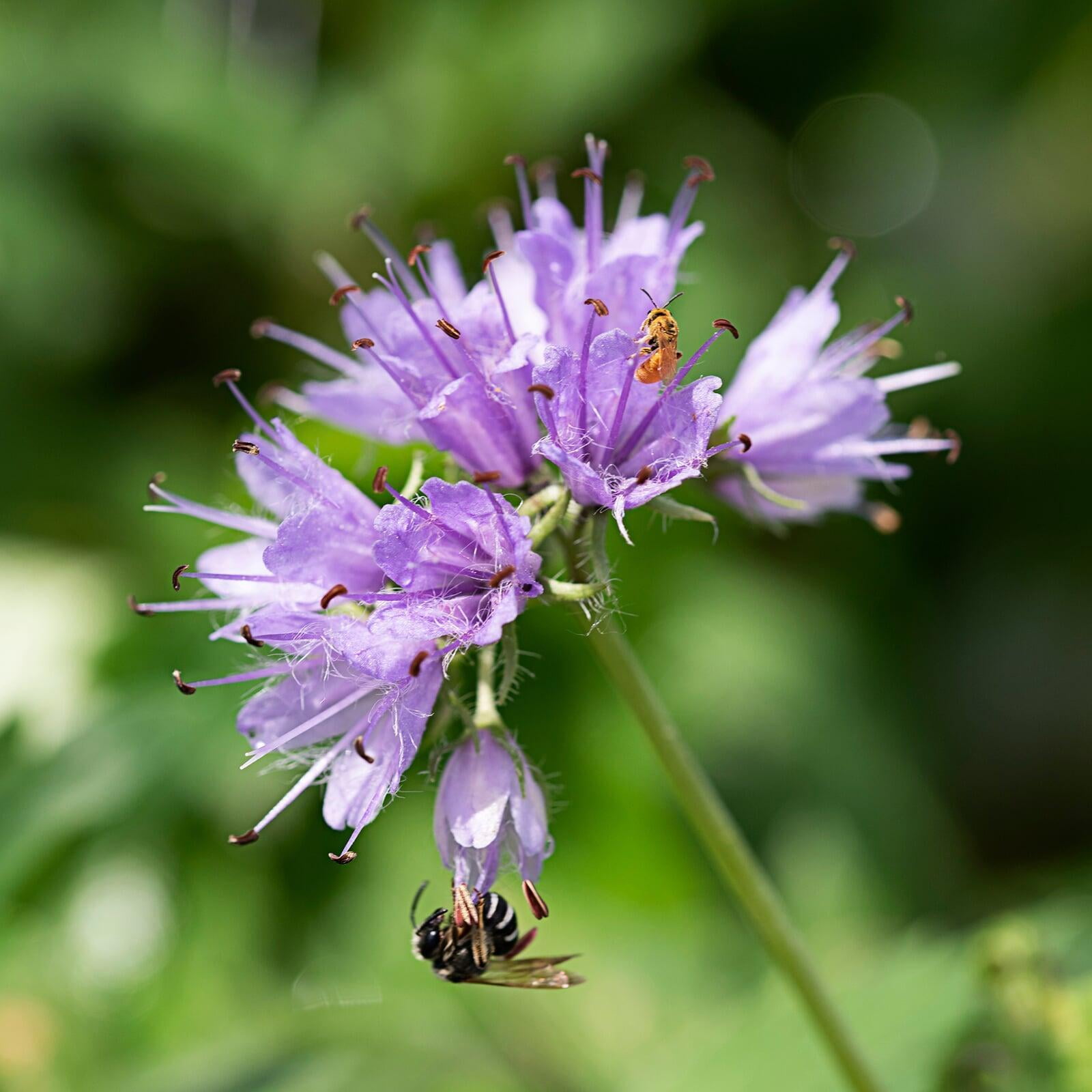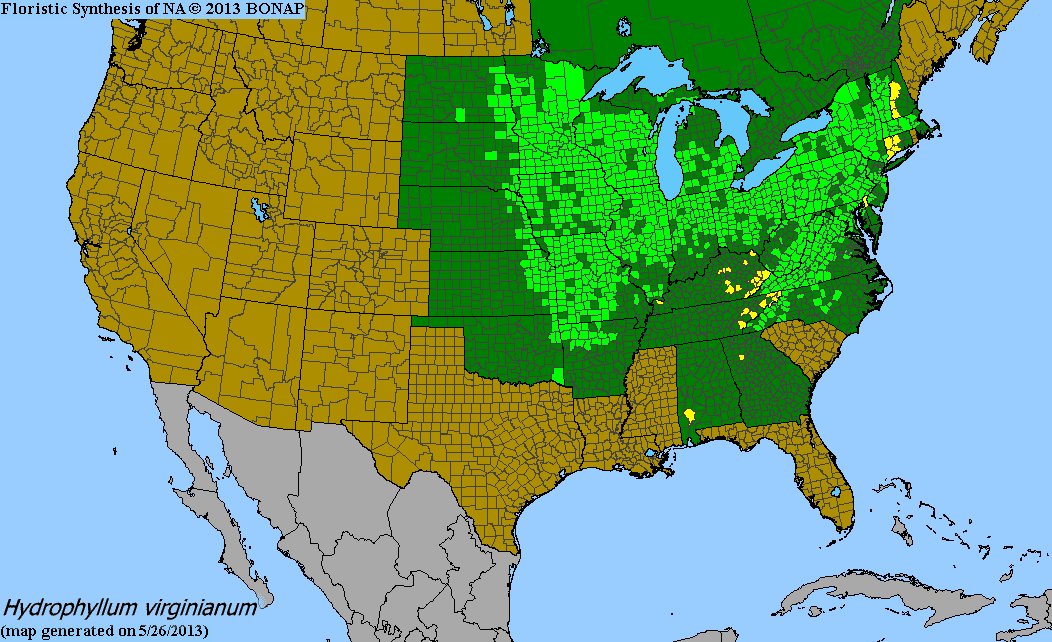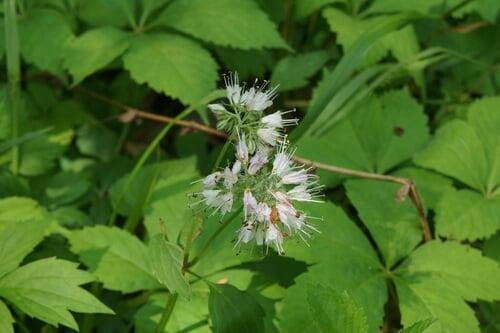Hydrophyllum virginianum
Virginia waterleaf Description:
Hydrophyllum virginianum, also known as Virginia waterleaf, is a herbaceous perennial plant native to eastern North America. It belongs to the Boraginaceae family and can grow up to 1-2 feet in height with a spread of 12 - 30 inches. The plant has several basal leaves, each with a palmate shape and is composed of five to seven toothed leaflets.
The Virginia waterleaf produces clusters of small, bell-shaped flowers that bloom from April to July. The flowers are typically pinkish-lavender or white in color and are arranged in loose, drooping clusters. The plant prefers growing in partial to full shade and moist, well-drained soils, making it an ideal choice for woodland gardens or shaded borders.
Hydrophyllum virginianum has some medicinal properties, and it has been used by indigenous people as an herbal remedy for coughs, fevers, and other ailments. However, it should be noted that it is not recommended to use this plant for medicinal purposes without proper consultation with a healthcare professional.
Native Range:
Virginia waterleaf is fairly common across the state of Minnesota. More broadly it ranges from the Midwest to Northeastern United States.
Standard Plant Information:
Plant Height: 12" - 30" inches
Bloom Time: May - June
Preferred Habitat: Does well in part shade to shade. Often found in Moist woods and floodplains.
Sowing:
For most homeowners, the best option is to scatter seed on the ground by hand broadcasting at a minimum of 16-64 pls ounces per acre. For even coverage, we recommend that you broadcast seed in perpendicular rows across the site to ensure even coverage.
You’ll want to broadcast any grass seed first, which will get raked into the soil lightly. Next, it is ideal to mulch the area lightly with either a clean (no seed) straw or preferably with our native Little Bluestem straw, sold at our retail garden centers. After a light mulching is complete, now it’s time to broadcast your native wildflower seeds, which should not be raked into the soil. A good rain or watering is sufficient to cover the seed.
Planting:
Simply dig a hole in the soil slightly larger than the plant’s roots. Ensure that the soil line of the plant is maintained during the transfer (i.e. the plant should be at the same level with the ground as it was in the pot). Pack any loose dirt back around the plant and make sure you water it well the same day to ensure it has the best chance of survival.



maps used with permission from MN Wildflowers
Hydrophyllum virginianum Gallery
Hydrophyllum virginianum Gallery










